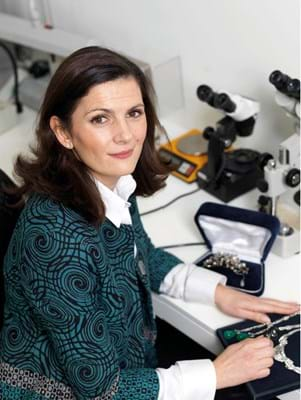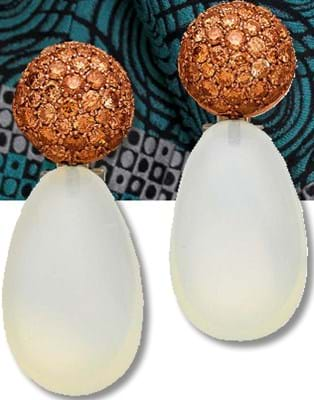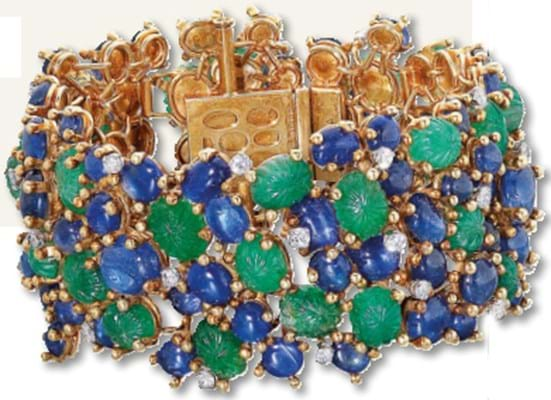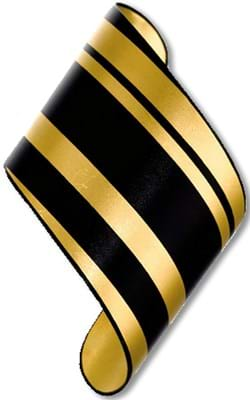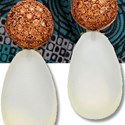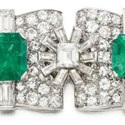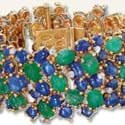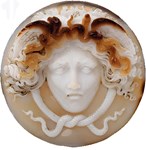Interview
WHAT are the key factors driving the sustained buoyancy of the jewellery market?
For Jean Ghika, director of jewellery for the UK and Europe at Bonhams, there is more at play than the time-honoured flight to ‘portable wealth’ in the time of financial strife.
“Economic uncertainty enhances the market and the sterling situation has encouraged interest from overseas, but it is not the full picture. Change goes back further than that – 10 or even 20 years.
“Jewellery is now being appreciated and understood in a different and much broader way.”
In 2016, jewellery buyers put serious money into coloured gems. Untreated Colombian emeralds, Burmese rubies and Kashmir sapphires all soared. Ghika fully expects this to continue.
This is partly a recognition that – in contrast to the controlled trade in diamonds – many gemstones are a finite natural resource.
New sapphires are seldom discovered in Kashmir and the supply of Burmese ‘pigeon’s blood’ rubies has failed to keep pace with demand from China (where the colour red is symbolic of happiness), while precious few natural saltwater pearls of note are now found in polluted waters.
Prices for fancy coloured diamonds continue to climb too.
According to the Gemmological Institute of America (GIA), they make up just 0.01% of polished diamonds produced annually.
“In particular,” says Ghika, “2016 was the year of the Kashmir sapphire. The sheer rarity and exceptional quality of these stones from the now largely extinct mines located high in the Himalayas of north-west India makes them very sought after.”
Two large Kashmirs Bonhams sold in London last year make the point: a cabochon sapphire for £506,500 (the equivalent of $102,300 per carat) and a 14.13ct cushion-shaped stone for £1.4m ($121,000 per carat).
Jewellery buyers have also had their heads turned following half a century of knowing that ‘A Diamond Is Forever’.
“The De Beers marketing campaign [launched in 1948 and hailed by advertising journalists as the ‘advertising slogan of the century’] created a desire and perception at all levels of the market. The diamond engagement ring is really a relatively new phenomenon but it was the go-to stone of the 20th century. Now a lot of people are looking for something different.”
Perhaps more fundamental is the observation that jewellery, once viewed as a commodity and the sum of its component parts, is now appreciated as art.
Ghika contrasts a market once focused primarily on the merits of geological specimens – typically all the major prices were paid for large stones – with the growing appreciation in both artistic and financial terms of Art Deco Cartier or 1950s Van Cleef and Arpels.
“Jewellery hadn’t kept pace with other areas of the art and antiques market. It is only recently that some pieces can demonstrate prices equivalent to those that are now common among other works of art.”
According to Bonhams’ data, Art Deco and Belle Epoque jewellery has risen in value by 88% since 2006 with jewels from the post-war era (1945-75) climbing 70% across the decade.
Jewels by leading brand names that ensure quality have shown even better returns.
“To find an original, intact, surviving jewel from a particular period in history, with the added bonus that it was made by a master jeweller, makes it incredibly rare.
Its value is not just in the gems but also in the fine workmanship and innovative design.”
In turn, provenance becomes more important, but so too does fashion. “It is more amplified with jewellery as it is something you wear. I am valuing some pieces, such as monumental Victorian jewels from the 1860s, at less now than I was a generation ago. These cycles happen.”
Very much back in vogue is jewellery from the 1960s and ‘70s – “the decades which saw the emergence of jewellery to wear rather than jewellery to put away”.
Much was relegated to the bottom of the jewellery box but it is the ‘antibling’ stance adopted by the likes of Grima, Donald and Devlin that appeals to 21st century collectors.
Ghika expects demand for these names will continue to rise, sparking appreciation of lesser names and the many anonymous but good-quality pieces from this period.
Curriculum Vitae
BA with honours in history of art from the University of Manchester
1992
Joined Bonhams
1994
Responsible for coordinating monthly jewellery sales at Bonhams Chelsea
1996
Transferred to Bonhams Knightsbridge – responsible for the fine jewellery sales
2004
Promoted to director based at New Bond Street


